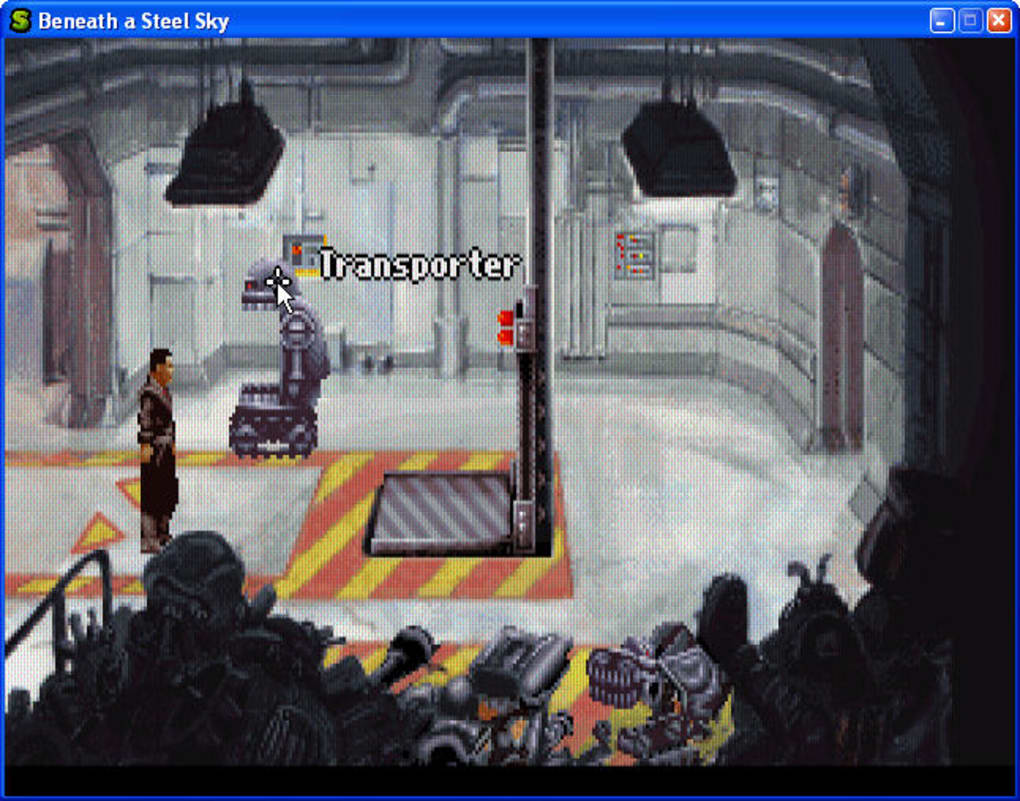

What to do now?Īll his time spent porting and selling American games had given him a familiarity with goings-on across the Atlantic that was unusual among his countrymen. In 1990, the 27-year-old Charles Cecil, who had recently been enjoying such luxuries as a posh company car and a mobile phone, was left high and dry by Mediagenic’s collapse.
Beneath a steel sky cover software#
Two years later, he parlayed that into a short-lived gig as development manager for US Gold, then a longer-lived one in the same role for Activision’s European subsidiary.īut a series of unfortunate events and poor management decisions at the American parent company - a trend which began about the time of Cecil’s arrival, with management’s decision to change the company’s name to the hopeless corporatese “Mediagenic” - ultimately spelled disaster for that international software empire. In 1985, Cecil jumped from the sinking ship to found his own Paragon Programming, which specialized in porting American games to European platforms. (Artic’s games were particularly noted for their atrocious spelling…)Ĭecil continued to design games and do various other odd jobs for Artic for several years, but by the middle of the decade the company’s homespun products were finding the going tough in what had now become a crowded and hyper-competitive British software market. A game designer had been born, alongside a cottage industry of similarly ramshackle semi-professional text adventures that would persist for the better part of two decades. “Why don’t you write one?” Thus Cecil designed Adventure B: Inca Curse, followed by several more text adventures, all primitive enough - or, if you like, minimalist enough - to fit into a computer with just 16 K of memory. “You like telling stories,” Turner said to Cecil. In June of 1981, Turner and Thornton’s Adventure A: Planet of Death became the first home-grown adventure game ever to be sold in Britain.Īs the name of that first game would imply, Artic intended from the beginning to make a whole line of text adventures, just as Scott Adams had done. Taking note of the success that Scott Adams was having with his text adventures in the United States, Artic developed an engine for similar games on Sinclair machines. Although he was not and never would become a programmer, Cecil got pulled into other aspects of the venture, such as drawing what he describes today as “the shittiest logo.”Ĭhris Thornton, Richard Turner’s partner in Artic, owned an imported Radio Shack TRS-80 this allowed the group of friends to keep tabs on the American microcomputing scene, which had a few years’ head start on the British. There he became friends with a fellow student named Richard Turner, who had just co-founded Artic Computing, one of the very first suppliers of software for the Sinclair ZX80, Britain’s very first mass-market personal computer. Born in 1962, he began studying engineering at Manchester University in 1980. Art directed by award-winning comic book artist Dave Gibbons (Watchmen), Beneath a Steel Sky is widely considered as one of the best point and click adventures ever written.Charles Cecil was a part of the British adventure-games scene from the beginning. It’s a terrifying threat that only you can liberate… Maybe.įeaturing Revolution's Software innovative Virtual Theatre system, Beneath a Steel Sky is a gripping cyberpunk science fiction point and click adventure game. Strangers in a strange land, Foster and Joey must survive long enough to discover the sinister truth behind his abduction - why they specifically came for him - and defeat the evil before it’s too late. In the melting pot of Union City, a not so impossible future, mankind’s worse nightmares are waiting to emerge from beneath the steel sky. Foster soon resurrects Joey and together they find themselves in Union City, where oppressed citizens live and work in soaring tower blocks, under the strict control of a brutal, fascist, AI dictatorship – whilst the corrupt, covetous and rich live below, shielded from the choking pollution. After being brutally abducted from his village in the wasteland, his village obliterated, and his kinfolk butchered, Robert Foster escapes a helicopter crash and finds himself alone save for the circuit board of his best friend, Joey, the AI he built as a child.


 0 kommentar(er)
0 kommentar(er)
